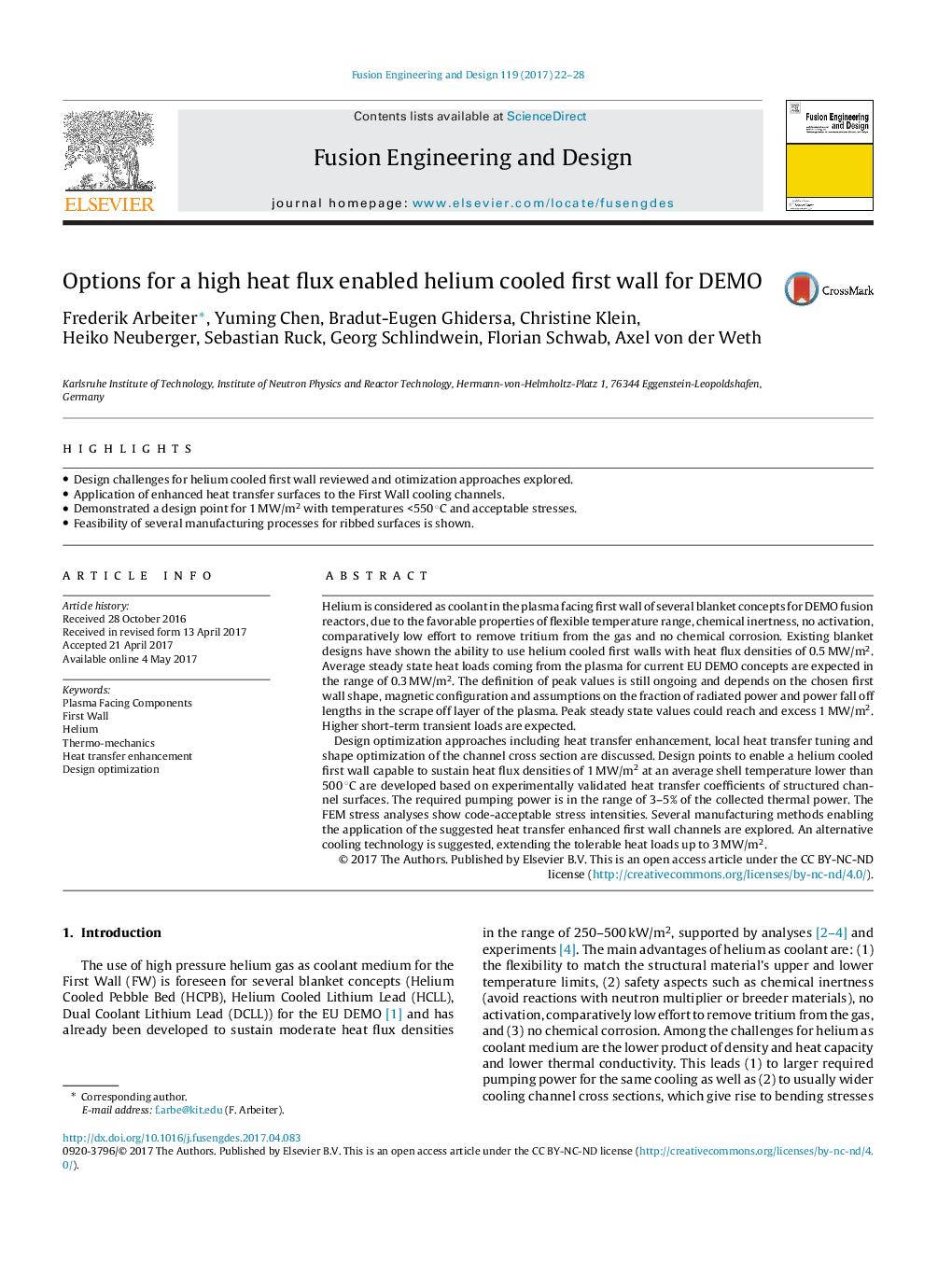| کد مقاله | کد نشریه | سال انتشار | مقاله انگلیسی | نسخه تمام متن |
|---|---|---|---|---|
| 4921102 | 1429334 | 2017 | 7 صفحه PDF | دانلود رایگان |

- Design challenges for helium cooled first wall reviewed and otimization approaches explored.
- Application of enhanced heat transfer surfaces to the First Wall cooling channels.
- Demonstrated a design point for 1 MW/m2 with temperatures <550 °C and acceptable stresses.
- Feasibility of several manufacturing processes for ribbed surfaces is shown.
Helium is considered as coolant in the plasma facing first wall of several blanket concepts for DEMO fusion reactors, due to the favorable properties of flexible temperature range, chemical inertness, no activation, comparatively low effort to remove tritium from the gas and no chemical corrosion. Existing blanket designs have shown the ability to use helium cooled first walls with heat flux densities of 0.5 MW/m2. Average steady state heat loads coming from the plasma for current EU DEMO concepts are expected in the range of 0.3 MW/m2. The definition of peak values is still ongoing and depends on the chosen first wall shape, magnetic configuration and assumptions on the fraction of radiated power and power fall off lengths in the scrape off layer of the plasma. Peak steady state values could reach and excess 1 MW/m2. Higher short-term transient loads are expected.Design optimization approaches including heat transfer enhancement, local heat transfer tuning and shape optimization of the channel cross section are discussed. Design points to enable a helium cooled first wall capable to sustain heat flux densities of 1 MW/m2 at an average shell temperature lower than 500 °C are developed based on experimentally validated heat transfer coefficients of structured channel surfaces. The required pumping power is in the range of 3-5% of the collected thermal power. The FEM stress analyses show code-acceptable stress intensities. Several manufacturing methods enabling the application of the suggested heat transfer enhanced first wall channels are explored. An alternative cooling technology is suggested, extending the tolerable heat loads up to 3 MW/m2.
Journal: Fusion Engineering and Design - Volume 119, June 2017, Pages 22-28